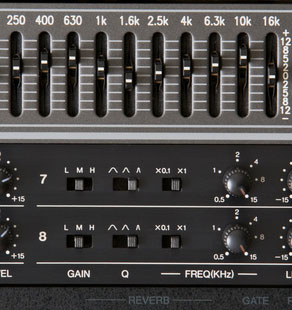Most instruments are distinctive in one way or another. Sure there are differences between a baritone and a trombone, but the foundation of their sound is still somewhat related. It’s difficult to find a similar analog for steel drums. They may not get used in every track, or even every album, but steel drums can really add quite a bit to some genres of music.
You can read about this sample library here: http://rekkerd.org/sound-dust-releases-steel-drum-percussion-room-mk2/
Archives for March 2013
Headphone Accuracy Versus Fashion
If headphones are meant to deliver music and other audio, it would seem safe to assume that manufacturers would be striving for accurate sound reproduction. While this may be true for high end professional headphones, it isn’t the case for many of the popular brands that are flying off the shelves. Many of these models have very strong bass.
You can read more here: http://news.cnet.com/8301-13645_3-57573289-47/how-do-you-like-your-headphone-sound-accurate-or-bassy/
Save 30% On Vienna Strings Collections For The Rest Of March 2013
The Vienna Strings Collections are currently available with a 30% discount off MSRP through their website. These collections have thousands of samples, ranging from single notes from solo instruments to trills and tremelos from a 14 violin ensemble. If orchestral string instruments are part of your creative vision, you would be wise to take a look at this sale.
You can read more about these collections here: http://en.audiofanzine.com/virtual-strings/vsl/Vienna-Instruments-Solo-Strings/news/a.play,n.15423.html
Bring Dynamics Back To Your Mix
Many of the popular professional mixes today are loud, but lack dynamics. This has the effect of encouraging more of the same flat, loud mixes because “everyone is doing it”. It is possible to have it both ways, though. With a few easy tweaks, you can have a mix that is both loud and dynamic.
You can read the full article here: http://en.audiofanzine.com/mastering/editorial/articles/get-loud-masters-without-overcompressing.html
EQ Basics
 Equalization (EQ) is a big part of mixing and mastering, but for a new audio engineer it may be difficult to grasp the concepts that are involved with using EQ effectively. And because we are all about making hard concepts easy to understand, often by mocking overly complex terms or those who love to use them, but mostly making things fun and making them so anyone can understand.
Equalization (EQ) is a big part of mixing and mastering, but for a new audio engineer it may be difficult to grasp the concepts that are involved with using EQ effectively. And because we are all about making hard concepts easy to understand, often by mocking overly complex terms or those who love to use them, but mostly making things fun and making them so anyone can understand.
I’ve written several articles about EQ, starting at the beginning with What is Equalization, Usually Called EQ? If you can’t get enough of my awesome EQ writing (shya:)), you can find all post about equalization on our site here: https://www.homebrewaudio.com/tag/eq/
There’s a lot to be gained from learning by doing, but having a basic idea of what your goals are and what tools are available can improve the learning curve. And you can also learn EQ stuff from people other than me. I know! It’s a shock. But seriously…
You can read a great step-by-step guide to getting started with EQ here: http://audio.tutsplus.com/tutorials/production/the-basics-of-equalization/